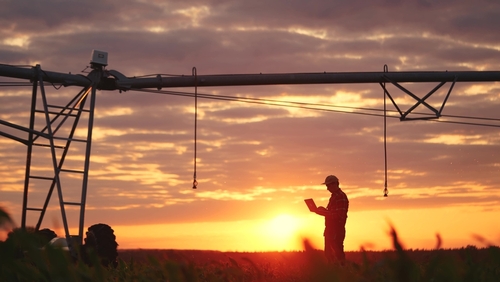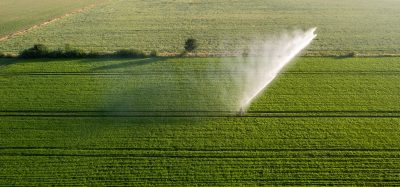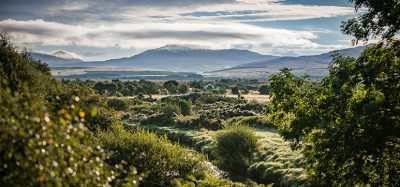Resilience by design: transforming food systems for tomorrow
Posted: 15 May 2025 | Tom Maidment | No comments yet
No man is an island – and no island is either. Our global food system needs urgent help. Transforming food systems to build climate resilience is no longer optional: it’s vital. Hilton Foods’ Tom Maidment believes the tools must be data-driven, holistic and uniquely tailored to individual farms…


Of all sectors, climate change is perhaps being felt most keenly in our food system. More protracted periods of drought are punctuated by intense spells of rainfall, washing away soils and the nutrients they contain. Growing seasons are shifting, planting windows narrowing and yields are becoming less reliable.
In the UK, that means reduced choice and higher prices, but for the most part we have been able to bridge any shortages with imports or slightly derogated standards. Egypt, Pakistan and Mexico, however, are already experiencing shortages of staple crops; the rationing of basic items like bread and flour, sky-high prices and the loss of agricultural livelihoods are beginning to stifle economic progress and perpetuate political instability.
Climate change’s mounting pressure on global food systems
This is beginning to have a direct impact closer to home. Climate change’s growing impact on the food system is one of the key drivers of the inflation and mass migration upending European politics, and concerningly, we are seeing a trend towards countries implementing food security measures that could limit our ability to import food to fill gaps in supply. India has instituted export bans on wheat and rice in recent years, as climate change is depressing yields by over 5 percent, despite the implementation of adaptation measures. It is joining governments across Asia and Africa in deciding that export revenues are not worth risking food shortages, particularly as their own populations continue to urbanise.
With the climate now warming at an alarming rate, the path ahead requires that we work with nature to build a resilient Net Zero food system.
It is clear our globally interconnected food system needs reform to ensure food security, but so far, society’s response has been a bumbling mixture of rapid technofixes, policy uncertainty and a lot of crossed fingers, with much of the risk and cost falling on farmers.
Agriculture of any kind is characterised by long timescales. Around the world, farmers harvest from orchards and olive groves their grandparents planted, steward herdbooks optimised over generations, till fragile soils they have carefully built up over decades and manage crop rotations over three-, six-, often 12-year cycles. This long-term thinking is essential to create resilient production systems that are fit for the future, but it also requires broad policy consistency, a trust that the decisions you make today will be rewarded years later.
For the last century or so, those policies can be largely summarised as ‘produce as much food as possible at the lowest possible cost’, with the increasingly prominent caveat that you should minimise harm to the environment along the way. As that caveat reveals it complexity and evolves to focus on actively enhancing the environment, it must be matched with the appropriate support that farmers feel they can trust.
In the absence of such support, farmers often must take an individual approach to climate resilience, investing in expensive heavy equipment to provide the certainty that they can produce crops in increasingly narrow windows. Wider seed drills, larger tractors and transitioning from contractors to farmers’ own largely dormant machinery are investments that reach well into six figures, yet they feel essential if your sowing window has narrowed from two weeks to a few days and you are threading needles to harvest a crop to a standard you used to be able to rely on for weeks.
It solves the problem short term, but this individualistic approach is just a sticking plaster that mostly leaves farmers with a bigger bill and fails to tackle the root cause of the problem. Flash floods and waterlogged ground are made more likely by higher temperatures followed by intense rainfall, but it is exacerbated by channelisation of watercourses, reduced ground cover upstream and the stripping of organic matter from soils. Working with neighbours upstream to plant cover crops or subtly change grazing patterns is likely to be far more effective, provide benefits to the whole catchment and make money for all parties involved, but making those connections can be challenging.


Agriculture of any kind is characterised by long timescales. Around the world, farmers harvest from orchards and olive groves their grandparents planted, steward herdbooks optimised over generations, till fragile soils they have carefully built up over decades and manage crop rotations over three-, six-, often 12-year cycles. This long-term thinking is essential to create resilient production systems that are fit for the future. Credit: Shutterstock
Considered long-term strategies
In one of the most nature-depleted countries in the world, the most successful solutions are often found in nature. Beavers are orders of magnitude cheaper than excavators or sluices at reducing flooding, with the added benefit of improved water quality. In addition, integrating clover, chicory or even trees into pasture will improve resilience to drought and reduce water runoff, with additional benefits to animal welfare and, most importantly, taste. The challenge comes in maintaining trust that these less visible, system-level changes provide a benefit that outweighs the very tangible losses of a few stalks of nibbled maize or reduced access to heavy machinery.
This is where we see policy becoming too complex to be easily implemented by the majority of farmers, but still too blunt of an instrument to effectively deliver its goals of environmental recovery at a sufficiently granular level.
Informed in-person advisers… can clearly explain the tool’s recommendations and related incentives, allowing farmers to ask questions without having to trudge through reams of documents.
The breadth of practice and technology change we are asking farmers to implement is both extensive and massively context dependent. In developing our Group Climate Transition Plan, the Hilton Foods team identified well over 50 distinct technologies, all ready to be deployed, with multiple implementation pathways for different production systems, existing infrastructure and even soils. While resilience and the messiness of reality mean there will always be extraneous expenditure, conveying that nuance to farmers is crucial to deliver the change we need at a cost we can all afford.
Coupled with that, governments around the world have curated vast spatial datasets over the course of decades that can predict climate and nature risks well into the future, to a granularity of a few square metres. But while these are generally available for free, they are incredibly complex. Even two years ago, the effort in analysing all that data to gain actionable, farm-level insights would have been an unworkable manual task, taking months to match the context with appropriate interventions. Such is the pace of technology’s relentless advance that with modern AI processing and visualisation tools, map-based devices could now be built out fairly quickly to enable farmers to perform the right interventions in the right place while delivering optimal environmental outcomes across overlapping ecosystems.
Distilling that mass of data into simple, reliable frontend tools will be the key to create bespoke but interconnected dynamic plans for every farm in the country that effectively balance their needs of both adaptation and mitigation against their primary purpose of producing the nation’s food with the incentives associated with delivering each element of the plan. Such a tool would require investment and maintenance, but if it integrated existing analysis and had appropriate support from key stakeholder groups, it would only take a few months to build, network and test with a decent team of developers and specialists.
Building intelligent tools that farmers trust
The magic ingredient though is trust; farmers are the experts of their land and so any tool must be sympathetic to that, providing farmers with actionable insights they recognise as bespoke to their farm. No farmer gets into the job because they love wading through paperwork, but with just 15 percent of farmers under 45 and the average farm employing less than one full-time employee, 2 process friction is the enemy, particularly in the digital realm. Chatbots are great, but a human touch is needed – as illustrated by some of the most successful schemes across the world, with Denmark and Ireland notable success stories. Informed in-person advisers, who can walk the farm, clearly explain the tool’s recommendations and related incentives provided by AI and allow the farmers to ask questions without having to trudge through reams of documents that might not even contain the answer.
With the climate now warming at an alarming rate, the path ahead requires that we work with nature to build a resilient Net Zero food system. Through deft collaboration, blending traditional solutions with high technology, government, retailers and processors has never been closer to supporting farmers with getting there.
Meet the author


Tom Maidment is Group Product Sustainability Senior Manager at Hilton Foods, an international multi-protein producer, leading the business’ climate transition plan, environmental risk analysis and nature strategy. Prior to that, he worked as an engineer on Jaguar Land Rover’s first electric vehicle programme before developing the company’s Net Zero strategy, and founded E.Mission, an AI software company improving public understanding of the carbon footprint of food. He is also an associate at Oxford Net Zero and was Head of the UK’s Youth Delegation to G20 Brasil.









